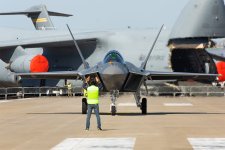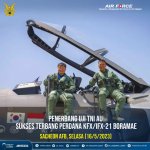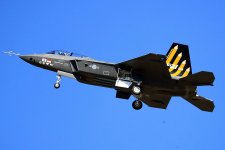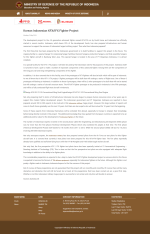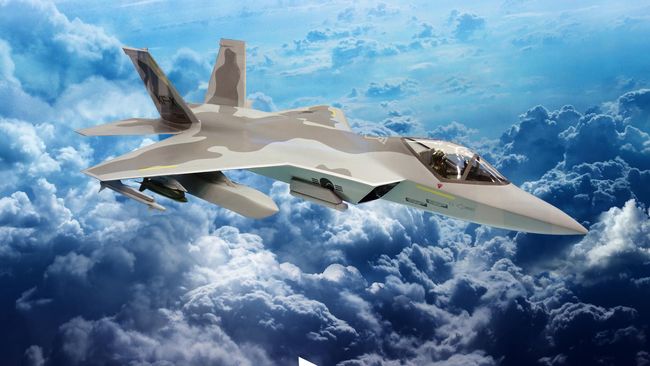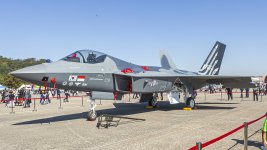Design of long-delayed KF-X still in debate
A conceptual model of the single-engine C501
By Kang Seung-woo (The Korea Times)
Posted : 2014-03-03 16:52
After a decade-long delay, Korea's indigenous fighter program is about to officially hit the road with bidding by partner firms scheduled for next month.
However, which design concept to go with — a single- or twin-engine aircraft — is emerging as the biggest sticking point in the program, codenamed KF-X.
Currently, the state-run Agency for Defense Development (ADD), siding with the Air Force, claims the nation's future fighter should be a two-engine, clean-sheet aircraft, proposing a design labeled C103.
The Defense Acquisition Program Administration (DAPA), on the other hand, has promoted a single-engine version of an aircraft, named C501, to be derived from the Korea Aerospace Industries (KAI) FA-50 light attack fighter, saying the plane is cheaper and easier to develop and build than the ADD preference.
The KF-X, aimed at manufacturing "F-16+ class" fighter jets with the help of global defense contractors to fill a fighter gap envisioned the next decade, has been delayed due to budget constraints and questions over its feasibility.
The program, initiated by the late former President Kim Dae-jung in March 2001, had its basic strategy resolved in April 2010 and the ADD conducted a final study on the feasibility of the development program between 2011 and 2012. The Air Force plans to secure 120 new jets to replace its aging fleet of F-4s and F-5s under the fighter project.
In January, 20 billion won ($18.7 million) from the defense budget for 2014 was appropriated for deciding on its design and engine, and DAPA said it would begin accepting bids from manufacturers to participate in the indigenous program in April.
A conceptual model of the twin-engine C103
The Korean Air Force believes that more than anything else, a twin-engine aircraft has better combat performance as well as better safety.
"Twin-engine fighters are more expensive, but they can carry heavier payloads over longer distances," said Greg Waldron, Asia managing editor of FlightGlobal, an aviation and aerospace industry website.
"In addition, a twin-engine fighter provides a larger margin of safety in that if the pilot loses one engine, he can usually make it back to base with the remaining one."
The Air Force also prefers the twin-engine version for possible future upgrades.
"The C103 is a Eurofighter-like 4.5th-generation plane that can easily be upgraded to a fifth-generation fighter, while the C501 is a fourth-generation one," said a local aviation analyst on condition of anonymity.
The ADD has reserved space for a conformable weapons bay in its C103 design, which would give it the makings of a low-observable fighter.
The analyst said that if Korea opts for the twin-engine aircraft in the KF-X, the combat plane will eventually be able to replace the Air Force's F-16s and F-15s in the future.
"Otherwise, the KF-X will only end up as replacement for F-4s and F-5s," he said.
Thus far, the Korean Air Force has only used the American airplanes, so it has been troubled by U.S. interference in international sales and upgrades.
The Air Force says the clean-sheet, brand-new aircraft will be free from that hindrance. The KAI FA-50 is based on the T-50 supersonic trainer, co-developed with Lockheed Martin.
"The biggest advantage is that Korea will be able to export it without an export license (from the United States)," said Yang Uk, a senior research fellow at the Korea Defense and Security Forum.
"The aircraft will help the Air Force save operational and maintenance costs, as well."
In addition, the Air Force says that the development of F-16-class fighters will be meaningless because the KF-X planes will enter service from 2023, with neighboring countries such as China and Japan featuring advanced stealth jets — J-20s and F-35s, respectively.
"In terms of military strategy and military buildup, considering the operational environment of the 2030s to 2050s, the Air Force believes that a twin-engine fighter is a better choice," said an Air Force officer.
"However, it is the defense ministry's task force who calls the shots and we will follow the decision."
According to KAI, the C501 will be built based on the FA-50, although it will be larger, but Yang said that the up-sizing plan is unfeasible.
"If the C501 is built based on FA-50, KAI should redesign the plane's aerodynamics, which will pose a big financial burden," he said.
"If so, there will not be much difference between the C501 and C103 in terms of cost and development time."
However, according to the Korea Institute of Science and Technology Evaluation and Planning (KISTEP) in November, the single-engine design will cost 6.4 trillion won for development, compared with 8.6 trillion won for the twin-engine aircraft. In addition, the single-engine plane's operational and maintenance costs were evaluated at about 1 trillion won cheaper, along with earlier deployment — 10.5 years for the twin-engine model and 8.5 years for the single version.
"KAI is a listed company, so they should consider seeking a profit from the KF-X," said the aviation analyst.
Richard Aboulafia, vice president of the Virginia-based Teal Group, believes that there is definitely a market for a new medium weight affordable fighter design in the coming decades. Lockheed Martin is expected to close its near-ubiquitous F-16 production line in 2015.
"The KF-X should follow previous successful medium fighters like the F-16 and Dassault Mirage series," he said.
Aboulafia also said that a decision to make the KF-X a twin-engine design would be very damaging to export prospects.
"Two large combat engines would make the KF-X too large and expensive for most of the export fighter market," he said.
"On the flip side, if two small civilian engines are adapted for combat use, that would make the KF-X an underperforming and inadequate plane, much like Taiwan's Ching Kuo."
In terms of combat performance, the number of engine is not a conclusive factor.
"The engine is a crucial part of a combat aircraft, but it is merely one aspect of a system of systems. Employed properly, both single and twin-engine fighters can be highly effective in combat." Waldron said.
James Hardy, Asia-Pacific editor of IHS Jane's Defense Weekly, calls the Air Force's preference for a twin-engine aircraft "ironic" given that it turned down twin-engine F-15 in favor of the single-engine F-35 in the F-X III competition last year.
"Single engine aircraft are no longer seen as inferior for most missions — thus the F-35 is single-engine, as are the F-16 and Saab Gripen," he said.
Yang said that there is no clear definition for the KF-X and that has led to ceaseless debates.
"If an aircraft from the KF-X achieves stealth fighter status, it is a high-class fighter jet now, but it will be a medium fighter in 2025-26. There is no clear standard for a medium-class aircraft," he said.
"I believe that KAI will be able to manufacture the high-class plane, should it get more funds. If the government really wants to see economic effects from the KF-X, it should be a national project."
DAPA wants a participant to optionally pay 20 percent of the KF-X development cost, which will prevent KAI from developing a twin-engine aircraft that requires more technical effort. In addition, the arms procurement agency will require compensation for any delay in deployment, the unidentified analyst said.
"If a decision to go ahead with a twin-engine design is made, the government should ease the company's financial burden," he said.
After a decade-long delay, Korea's indigenous fighter program is about to officially hit the road with bidding by partner firms scheduled for next month.

www.koreatimes.co.kr



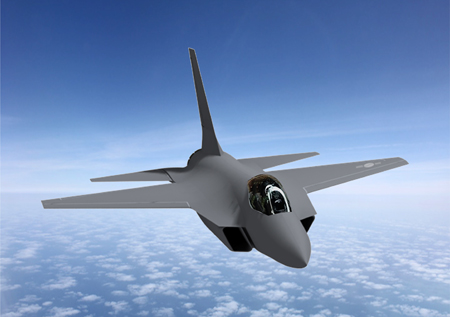

.jpg)
